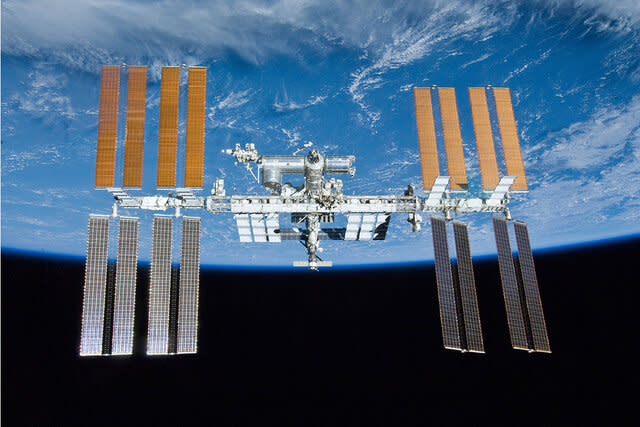NASA wants to build a 'space tug' to safely destroy the ISS
In 2009, Neill Blomkamp hit the public consciousness harder than a downed spacecraft with his feature film debut, District 9. The movie established Blomkamp’s signature style, which mashes dire and dingy real-world environments with high-flying futuristic tech and creatures. That aesthetic came back with a vengeance in Blomkamp’s 2013 sophomore film, Elysium (now streaming on Peacock!) starring Matt Damon and Jodie Foster.
The story takes place on Earth in the year 2154. More accurately, part of the story takes place on Earth. The rest revolves around and takes place upon an orbital space station called Elysium. Nearly a century and a half in the future, the Earth is overwhelmed by the needs of humanity and most people live in squalor on the planet’s surface, struggling to survive. The wealthy elite, however, live out their days on a luxury space station, visible but forever out of reach in the sky.
Max Da Costa (Damon) is a criminal on parole when he is exposed to a lethal dose of radiation on the job. He’s given a pink slip, a pat on the back, and five days to live. Rather than go home and wait for the end to come, Max embarks upon a life and death mission to get to the station, break in, and use one of their high-tech med bays to cure his fatal condition before it’s too late.
By the time the credits roll, Max and his friends have succeeded in destroying the power structure which kept them eternally have-nots, but it’s only a matter of time before the physical distance between Earth and Elysium results in the same sort of altitude-based class system all over again. If they really want to prevent that kind of power disparity from happening again they might need to bring the station down for good. Of course, that isn’t the easiest thing to accomplish, as our own scientists and engineers know all too well.
In recent years, we have witnessed multiple large craft crashing back to Earth in an uncontrolled descent. One of them even smashed into the Moon, giving our closest cosmic neighbor a couple of new craters.
RELATED: NASA mission spots Chinese rocket impact craters on the Moon
So far, we have avoided any catastrophic accidents caused by pieces of disintegrating spacecraft coming down over populated areas, but letting rockets and orbital labs fall back to Earth wherever they feel like is a recipe for disaster sooner or later. That’s especially true when dealing with the International Space Station, which is the largest artificial object we have ever put in space.
Over the last few decades, members of five space agencies and dozens of nations all over the world have come together to build modules, carry out experiments, and live in space together. The result is a truly massive machine, 310 feet (94 meters) long and nearly as wide, all racing through space at more than 17,000 miles per hour, 250 miles above the Earth. It’s not the sort of thing you want coming down just anywhere. But come down it must.

International Space Station Photo: NASA

 Yahoo Autos
Yahoo Autos 